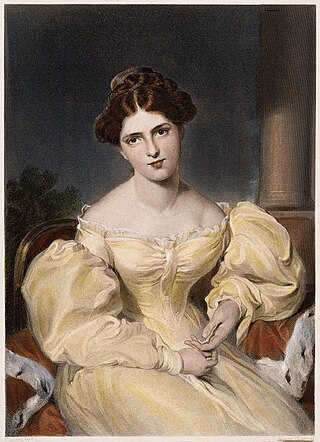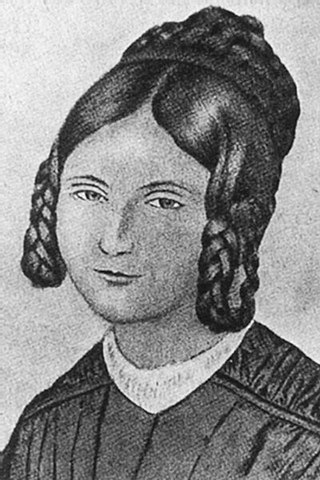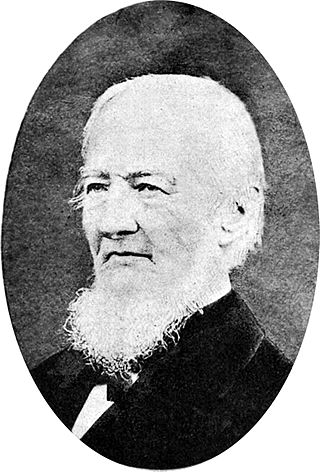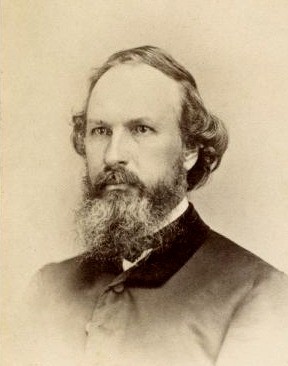
Frances Burney, also known as Fanny Burney and later Madame d'Arblay, was an English satirical novelist, diarist and playwright. In 1786–1790 she held the post of "Keeper of the Robes" to Charlotte of Mecklenburg-Strelitz, George III's queen. In 1793, aged 41, she married a French exile, General Alexandre d'Arblay. After a long writing career and wartime travels that stranded her in France for over a decade, she settled in Bath, England, where she died on 6 January 1840. The first of her four novels, Evelina (1778), was the most successful and remains her most highly regarded, followed by Cecilia (1782). Most of her stage plays were not performed in her lifetime. She wrote a memoir of her father (1832) and many letters and journals that have been gradually published since 1889, forty-nine years after her death.

Frances Anne "Fanny" Kemble was a British actress from a theatre family in the early and mid-19th century. She was a well-known and popular writer and abolitionist whose published works included plays, poetry, eleven volumes of memoirs, travel writing, and works about the theatre.

Roswell King was an American businessman, planter, slave owner, and industrialist. Together with his son, Barrington King, he founded Roswell Manufacturing Company in the Georgia Piedmont, establishing a cotton mill and industrial complex. They co-founded the town of Roswell, Georgia, inviting friends to be part of its and the mill's development in the 1830s. Roswell's family originally hailed from Delaware but later moved to Connecticut where they were among the first residents of New Haven and later Windsor. As a teen, Roswell participated in the American Revolutionary War as part of the naval resistance before moving to Georgia's low country.

Eliza Farnham was a 19th-century American novelist, feminist, abolitionist, and activist for prison reform.

Mathilde Franziska Anneke was a German writer, feminist, and radical democrat who participated in the Revolutions of 1848–1849. In late 1849, she moved to the United States, where she campaigned to end slavery, agitated to enfranchise women, and ran a girls' school.

The New England Hospital for Women and Children was founded by Marie Zakrzewska on July 1, 1862. The Hospitals goal was to provide patients with competent female physicians, educate women in the study of medicine and train nurses to care for the sick. Until 1951 the hospital remained dedicated to women, it was then renamed to New England Hospital to include male patients. The hospital was renamed again to The Dimock Community Health Center in 1969. At present The Dimock Community Health Center provides a range of healthcare services including Adult & Pediatric Primary Care, Women's Healthcare and HIV/AIDS Specialty Care.

The Healy family was an Irish-American and African-American family notable for the high achievements of its first generation of children, who were born into slavery in Georgia in the second half of the nineteenth century.

Sarah Harriet Burney was an English novelist. She was the daughter of the musicologist and composer Charles Burney and half-sister of the novelist and diarist Frances Burney. She had some intermittent success with her novels.

Peter Johnson Gulick was a missionary to the Kingdom of Hawaii and Japan. His descendants carried on the tradition of missionary work, and included several scientists.

Luther Halsey Gulick Sr. was a missionary to the Hawaiian Kingdom, and several other places. Although educated in medicine, in later life he became a newspaper editor while several of his children became active in public health.
Julia Charlotte Maitland, née Barrett, first married name Thomas, was an English writer and traveller, and the grandniece of the novelists Fanny Burney and Sarah Burney. She and her husband ran a boys' school in India, while strongly advocating a national system of education for the country.

Edmund Andrews was an American doctor, a pioneer in surgery and medical education of the Western United States. He was one of the founders of the Medical Department of the Northwestern University.

Annie Jane Schnackenberg was a New Zealand Wesleyan missionary, temperance and welfare worker, and suffragist. She served as president of the Auckland branch of the Women's Christian Temperance Union New Zealand 1887 to 1897, and national president for WCTU NZ from 1892 to 1901 – overseeing the final push for petitioning the government to grant women the right to vote in national elections. She also was a charter member of the National Council of Women of New Zealand.
Maria Grace Saffery (1773–1858) was a Baptist poet and hymn-writer from England.
Frances Anne Edgeworth (1769–1865), known as Fanny, was an Irish botanical artist and memoirist. She was the stepmother and confidant of the author Maria Edgeworth.

The Ladies' London Emancipation Society was an activist abolitionist group founded in 1863, which disseminated anti-slavery material to advance British understanding of the Union cause in the American Civil War as one pertaining to morality rather than territory. This was said to be the first national anti-slavery society for women.

Fanny Titus Hazen served as an army nurse during the American Civil War. Later in life, she was president of the National Association of Army Nurses of the Civil War.

Maude Andrews Ohl was an American journalist, poet, and novelist. She was The Atlanta Constitution's first woman reporter. Her published works include a biography about James Abbott McNeill Whistler, Cousin Butterfly: Being Some Memories of Whistler (1904); the novels The Wife of Narcissus (1908), and Melissa Starke (1935); as well as poetry collection Songs of Day and Night.

Mothers of the Novel: 100 Good Women Writers Before Jane Austen (1986), by Dale Spender, is a foundational study for the reclamation project central to feminist literary studies in English in the late 1980s and 1990s.

The War-Time Journal of a Georgia Girl is a diary written by Eliza Frances Andrews during the American Civil War. It focuses on the daily life of a young girl living in the Confederate States of America during the conflict.






















